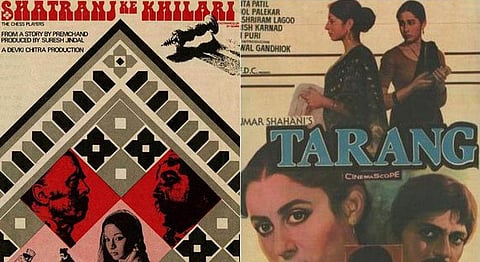
- HOMEGROWN WORLD
- #HGCREATORS
- #HGEXPLORE
- #HGVOICES
- #HGSHOP
- CAREERS
- ABOUT US
- CONTACT US

Originated in Bengal in the 1950s, Parallel Cinema was a movement that served as an alternative to mainstream commercial Indian cinema, represented especially by popular Hindi cinema, known today as Bollywood (Trivia: According to Oxford Dictionaries, it only came to be known as ‘Bollywood’ during the 1970s).
The term is imbued with a sense of elimination, signifying that the movement was about cinema that ran parallel to the mainstream cinema that we were accustomed to watch. Inspired by Italian neo-realism, Parallel Cinema began just before the French New Wave and Japanese New Wave, and was a precursor to the Indian New Wave of the 1960s. The movement was initially led by the stalwarts of Bengali cinema like Satyajit Ray, Mrinal Sen, Ritwik Ghatak, Tapan Sinha and others.
However, it would be incorrect to assume that Bengali cinema was the only contributor to the Parallel Cinema Movement in India. Directors like Adoor Gopalakrishnan (Malayalam cinema), Girish Kasaravalli (Kannada cinema), K.N.T. Sastry (Telugu cinema), Mani Kaul, Kumar Shahani, Shyam Benegal, Govind Nihalani, Saeed Mirza, and others were also the pioneers of Indian parallel cinema.
Parallel Cinema in India has assumed various forms through the years, starting from the neorealism-influenced films of Nehruvian India, through the more politically radical films of the 70s, and the liberal humanist films that are clubbed within independent cinema.
Contrary to the erstwhile mainstream cinema which mainly comprised melodramatic escapades through song and dance sequences, parallel cinema took up issues of social impact, often alluding to the political climate of the country, as well as issues of poverty, and the urban-rural divide. It boasted of handling complicated real-life themes within simple stories and artistic camera work. Mirroring the social issues of the contemporary age, Parallel Cinema borrowed heavily from the Indian literature of the times, and therefore, became an important study of the contemporary Indian society. In fact, it is now used by scholars and historians alike to map the changing demographics and socio-economic as well as political temperament of the Indian populace. Most films made during this period were funded by state governments to promote an authentic art genre from the Indian film fraternity.
Early examples of Indian cinema’s social realist movement include Dharti Ke Lal (1946), a film about the Bengal Famine of 1943 directed and written by Khwaja Ahmad Abbas, and Neecha Nagar (1946), a film directed by Chetan Anand and written by Khwaja Ahmad Abbas that won the Grand Prize at the first Cannes Film Festival. Since then, Indian independent films were frequently in competition for the Palme d’Or at the Cannes Film Festival throughout the 1950s and early 1960s, with some of them winning major prizes at the festival. Satyajit Ray, one of the most prominent makers of realist cinema in India, shot to fame with his Apu Trilogy, which have been cited among the greatest films of all times.
Having said that, it’s not like these art films did not garner any amount of commercial success. An early example of this was Bimal Roy’s Do Bigha Zamin (1953), which was both a commercial and critical success. The film won the International Prize at the 1954 Cannes Film Festival and paved the way for the Indian New Wave. Hrishikesh Mukherjee, one of Hindi cinema’s most successful filmmakers, was named the pioneer of ‘middle cinema’, and was renowned for making films that reflected the changing middle-class ethos. According to Encyclopædia Britannica, Mukherjee “carved a middle path between the extravagance of mainstream cinema and the stark realism of art cinema”. Another filmmaker to integrate art and commercial cinema was Guru Dutt, whose film Pyaasa (1957) was featured in Time magazine’s ‘All-TIME’ 100 Best Movies list.
However, this kind of cinema, devoid of any formulaic plots comprising fanciful scenes and wish-fulfilment with respect to conventional societal expectations, failed to provide the sensationalism and titillation that the Indian audience sought. Owing to the increasing cost of movie production in the 1990s, parallel cinema started witnessing a decline.
The fact that investment returns cannot be guaranteed, made art films less popular amongst filmmakers. Underworld financing, political and economic turmoil, television and piracy proved to be a fatal threat to parallel cinema as it declined. However, the movement paved the way to an alternative cinematic discourse in the country, eventually led up to the New Wave in Indian Cinema.
If you enjoyed reading this article, we suggest you also read:
